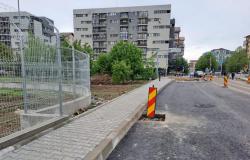
The taxes set for properties such as real estate and land will increase extremely much starting in 2025, this is not a surprise for Romanians. The taxes collected and used by the local authorities will be higher as soon as the provisions established by the Emergency Ordinance no. 16/2022, which essentially changes the way these taxes are calculated, according to an EY Romania analysis.
Why taxes will increase so much in 2025
“The year 2025 seems so far away now, when 2024 has only just begun, but taxpayers, individuals and legal entities alike, must know that, in addition to this year’s tax increases, in only 9 months, new increases await them, this time on the segment of local property taxes. It is about provisions that essentially change the way they are calculated, established by Emergency Ordinance no. 16/2022, which would have been applied starting January 1, 2023.
Later, the authorities came back and decided to postpone the entry into force, for January 1, 2025. The current year has already brought increases in other taxes and legislative changes on the basis of which the fiscal burden increases in 2024, so the postponement of the application of the new rules calculation of local taxes was welcome.
It is important to know, however, that, following the application of the new regulations, from next year, the increase in taxes and property taxes (real estate and land), collected and used by local authorities, is inevitable“, it is mentioned in a material signed by Alex Milcev, the leader of the Fiscal and Legal Assistance department, EY Romania.
What is the main cause for concern?
According to the specialist, the first factor that caused the change in the way these taxes are calculated is strictly related to the internal context, at the level of the country, where we are faced with the situation where the local budgets do not collect enough revenues from taxes and fees to cover local expenses, thus so as to leave room for investments. In this sense, the Territorial Administrative Units constantly request additions from the state budget, so that they compete, in fact, with the fulfillment of macroeconomic, strategic and national interest objectives and investments.
“The national budget is already suffering from ‘non-collection’, it being known that Romania is at the bottom of the European ranking, in terms of tax collection rate in GDP (27% versus 42% European average). In most EU countries, local authorities are financed massively from local taxes and less from the central budget”states the quoted source.
A second factor, intrinsically linked to the first mentioned, is represented by the recommendations of international forums, such as the International Monetary Fund (IMF), the OECD and of course the European Commission, says Milcev.
“For example, very recently, the IMF reiterated the need for Romania to take measures to eliminate the pressures on the state budget, which also come from the local authorities. IMF experts believe that Romania’s tax revenues, being below the level of other European countries, cannot support the development of public services at the level of the EU states.
That is why a deep reform of fiscal policies is required: income tax reform, VAT reform, ecological taxes, pension reform, but also of the property tax system. It should be noted that it is not only about the issue of reallocation between budgets, but also about the fact that the current local property taxes are much lower than the European average, both in absolute and relative values“, points out the representative of EY Romania.
In this sense, according to official statistics, property taxes at the EU level in 2022 represented around 2.7% of total taxes collected, when in Romania this percentage is only 0.4%, even this level is decreasing compared to the percentage of 0.9% collected between 2013 – 2015.
In this context, the paradigm of local taxes will change radically: from being dependent on the center, local authorities will have to become more and more autonomous, according to the cited analysis. The solution is a combination between a different calculation method than the current one for property taxation, which will lead to tax increases, and a better administration of public money, through balanced spending and investments for the benefit of the community.
You could also read today: The job paid with 60,000 euros that you don’t even have to work too much
“Basically, we are talking about two important elements in this change. First of all, for buildings (where the largest amounts are collected), the tax intervals are changed, by removing the maximum ceiling, which will be at least 0.1% for residential (today it is between 0.08% and 0.2 %) and minimum 0.5% for non-residential (today it is between 0.2% – 1.3%). So, local authorities will be able to adjust the fee flexibly, according to their own needs and of course according to ‘demand’ and ‘offer’, i.e. the attractiveness of the locality for residents and investors”concluded the author of the analysis.
Second, property taxes for individuals are now calculated based on figures not adjusted to the current market value. Through the new regulations, the tax base will be established depending on the value of the buildings and the land on which they are located, which will be included in the market studies regarding the indicative values for real estate in Romania, administered by the National Union of Notaries Public in Romania (UNNR), explains the specialist.
“It’s true, there’s a separate debate here about how appropriate this approach is, but things will probably clear up in the second half of this year.”he added.
“What will this mean for each of us? If we talk about individuals, let’s remember that Romania ranks 1st in the EU in terms of the percentage of the population that owns real estate – over 90% of Romanians live in their own home. All these people will have a significantly increased cost from the current one, starting in 2025, which will reflect and be closer to the true value of the property, and this aspect could produce long-term consequences.
If we were to give a single, predictable example, it is the migration to cheaper areas of those who will not afford these higher taxes for their properties. If we are talking about legal entities, decisions to build a factory, an industrial park or a warehouse will be influenced to a greater extent by the level of local taxes compared to previous periods, as EBITDA and investment return will be under greater pressure than they have been until now”claims the representative of EY Romania.
You could read: More than 1 million pensioners will lose money after the big recalculation in September! CNPP announcement
Tags: real reason Romanians taxes explode afford higher taxes properties
-




